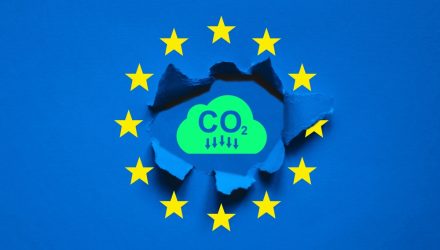The KraneShares European Carbon Allowance Strategy ETF (KEUA) may be a compelling offering as demand for EUAs is supposed to pick up later in the year.
Demand for EUAs is expected to increase during the second half of the year as macroeconomic conditions improve, according to KraneShares. Demand should grow as production levels increase on improving macroeconomic conditions, particularly applicable to industrial sectors.
Participants in the EU Emissions Trading System have expressed optimism that constructive fundamentals will result in improved prices during the second half, reversing the fall in prices seen recently, according to KraneShares.
See more: “Carbon Pricing Highlights Opportunity With These ETFs”
How Investors Are Using EUAs in Portfolios
KEUA offers exposure to the EUAs program, which is the world’s oldest and most liquid carbon allowance market.
KEUA fits a few different roles in portfolios. EUAs can be used for total returns as they have generated strong returns for investors in recent years. Prices more than tripled between 2019 and 2022.
Additionally, KraneShares’ ETF can be a useful portfolio diversifier. EUAs have historically had a low correlation to traditional asset classes.
“We are seeing growing interest from advisors to add less correlated assets into client portfolios. Using an ETF to access the carbon allowance market makes it easy to do so,” Todd Rosenbluth, head of research at VettaFi, said.
Investors can customize their allocation to the global carbon credit market by pairing KEUA with the KraneShares Global Carbon Strategy ETF (KRBN) and the KraneShares California Carbon Allowance ETF (KCCA).
KCCA provides targeted exposure to the California Carbon Allowances (CCA) cap-and-trade carbon allowance program. EUAs have historically seen much higher volatility than CCAs, which have seen more modest returns. Pairing the two can enhance risk-adjusted returns.
KRBN provides the broadest exposure to carbon credits, tracking all major global cap-and-trade programs. These programs include the EAU, CCA, and the Regional Greenhouse Gas Initiative (RGGI).
For more news, information, and analysis, visit the Climate Insights Channel.

